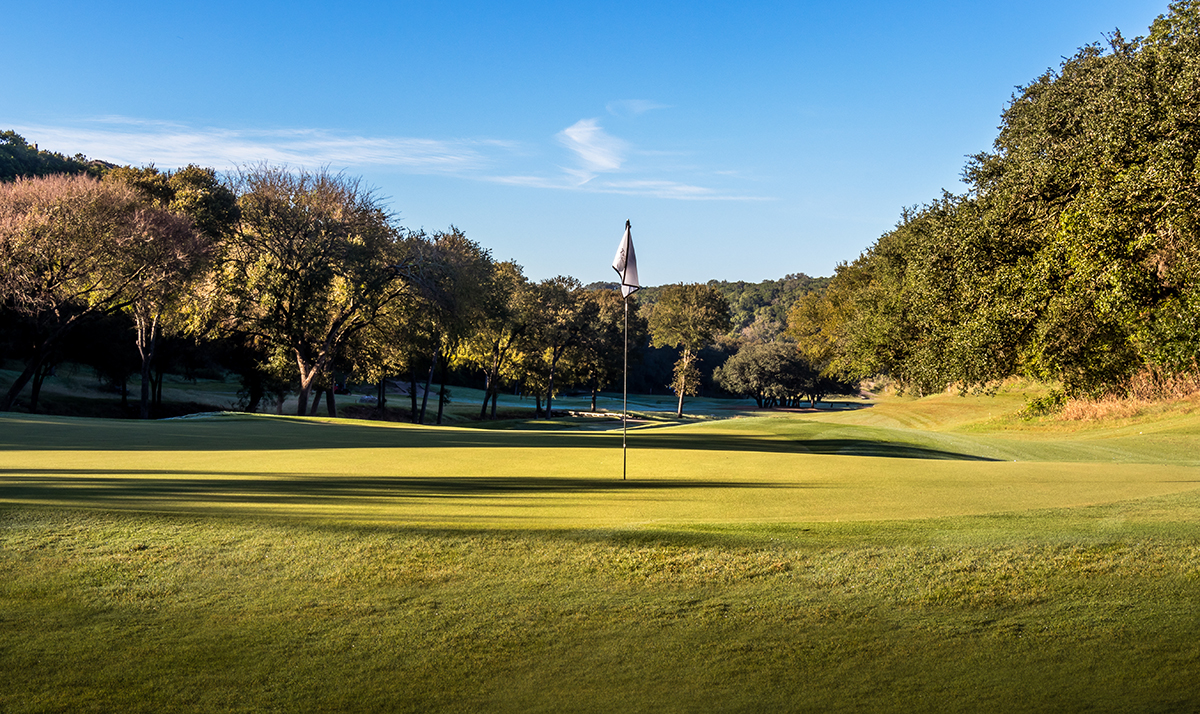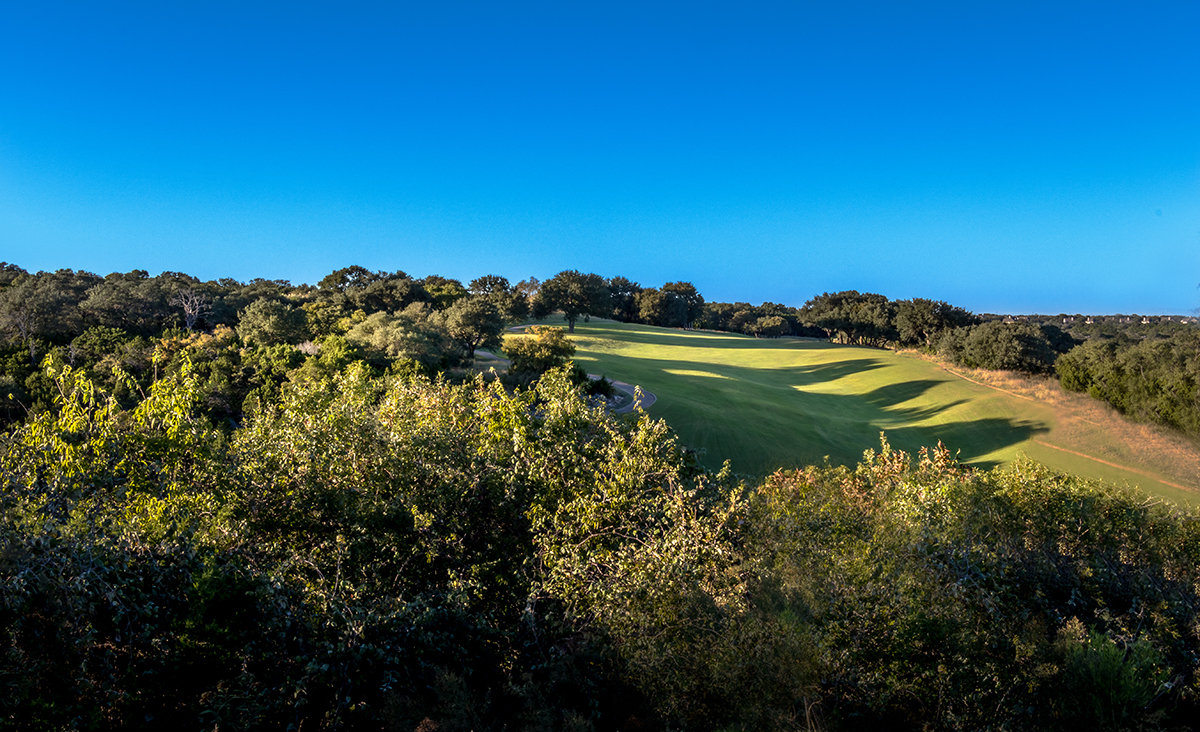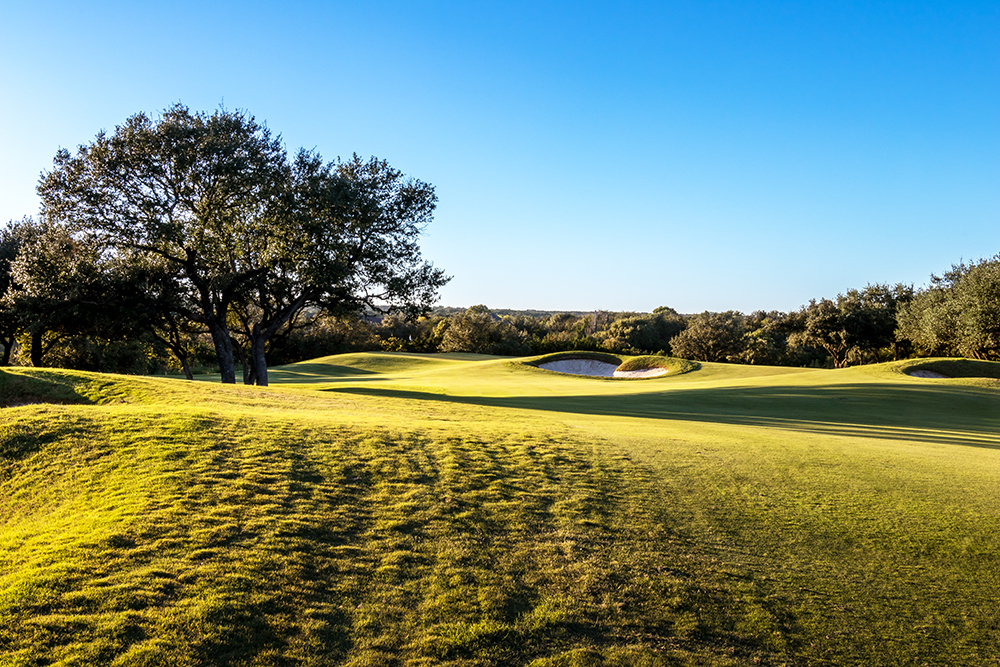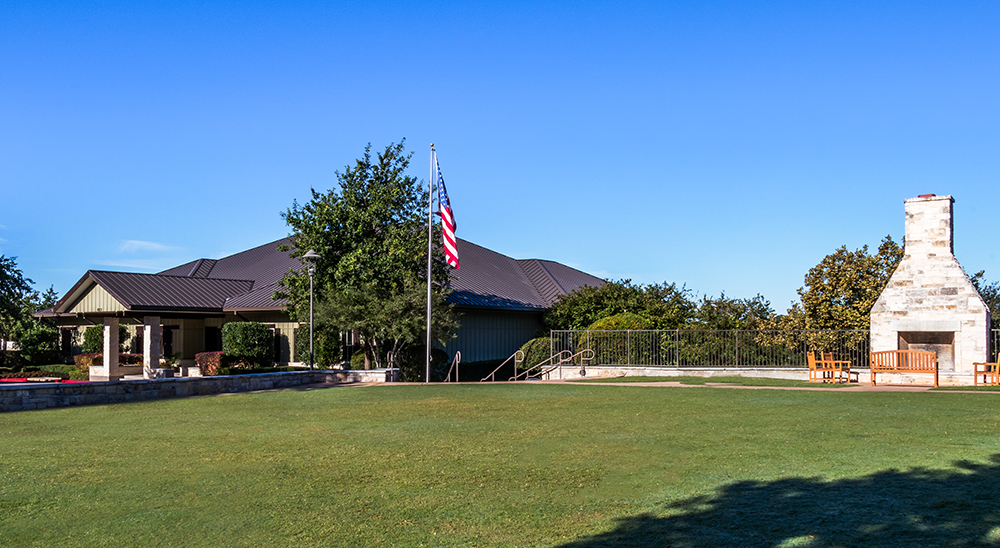 In the same way the AT&T Pebble Beach Pro-Am is more tantalizing watch than a standard PGA TOUR event, some golf courses simply bring a bigger sense of excitement than others. Twin Creeks Country Club in Cedar Park is one of those courses. If Game of Thrones is appointment viewing, Twin Creeks stacks up as Appointment Golf.
In the same way the AT&T Pebble Beach Pro-Am is more tantalizing watch than a standard PGA TOUR event, some golf courses simply bring a bigger sense of excitement than others. Twin Creeks Country Club in Cedar Park is one of those courses. If Game of Thrones is appointment viewing, Twin Creeks stacks up as Appointment Golf.
This private club (and centerpiece of a 760-acre master-planned community) is situated 20 miles northwest of downtown Austin, but when you first see the sweeping panoramas and elevation changes on this course, you’ll feel like you’ve ventured much farther into the Texas Hill Country.
“You really can’t see the true character of this golf course from the clubhouse even though it sits high above many of the holes,” says head golf professional Troy Dickson. “There’s a definite surprise factor once people get on the course and see how much elevation change and natural beauty there is out here.”
The 7,033-yard, par-72 Fred Couples Signature course (co-designed with Lee Schmidt and Brian Curley) features with all the thrills of a resort course and the gentle continuity of a classically designed members’ club. The “twin” creeks the course was named for come into play on thirteen holes in either rippling hazard or dry-bed form while century-old pecan and oak trees border the fairways along with numerous rock outcroppings that serve not only for aesthetic appeal, but also help shape many of the hole designs.
“The big take away from playing this golf course is the chance to be surrounded by serenity and beauty. It happens to be a great golf course, but it’s also great commune with nature,” Dickson says.
 Twin Creeks opens with a manageable par 4 that swings slightly from left to right, #1 should help you open your round with a decent score if you can avoid the fairway bunker on the left side of the landing area. The second hole is all about strategy. A short par 5 that’s reachable if your drive can narrowly avoid fairway bunkers left and the creek that snakes its way across the fairway from the left and winds around to border the right side of the green. A small bail-out area left of the green makes it even more enticing two go for the green on your second shot.
Twin Creeks opens with a manageable par 4 that swings slightly from left to right, #1 should help you open your round with a decent score if you can avoid the fairway bunker on the left side of the landing area. The second hole is all about strategy. A short par 5 that’s reachable if your drive can narrowly avoid fairway bunkers left and the creek that snakes its way across the fairway from the left and winds around to border the right side of the green. A small bail-out area left of the green makes it even more enticing two go for the green on your second shot.
“I like number two because everyone who hits a good drive can go for the green in two,” says Dickson. “That’s a missing element in a lot of modern courses that try to beat you to death with yardage.”
The par-5 fifth is on the other end of the distance spectrum. At 593 yards from the tips, this hole drop down about 90 dramatic feet from tee to fairway. Bordered on the left by a dense collection of trees and on the right by the ever-present creek, this hole features a testy approach that must cross the creek and clear deep bunkers short and left of the green. Miss the green here and you’ll discover one of the many ways this layout plays much tougher than it looks.
One of the front nine’s most memorable holes is the 426-yard, par-4 seventh where an uphill tee shot sets up an approach to a green some 60 feet below the center of the fairway. Big hitters can drive through the flat landing area and cut off the distance dramatically, but might face a tricky downhill lie in the process.
A signature hole candidate, #9 is another wild downhiller. This 208-yard par three grabs your attention with a dramatic 100-foot drop from tee to green and a deep-but-narrow putting surface protected by the creek short and left and a perimeter of trees on the right.
 Making the turn, you exit the valley briefly and head up to an eclectic set of holes on the second nine. “Some people call this a resort style course,” says Dickson. “The holes seem to get better as you go along.”
Making the turn, you exit the valley briefly and head up to an eclectic set of holes on the second nine. “Some people call this a resort style course,” says Dickson. “The holes seem to get better as you go along.”
Couples has called the 308-yard, par-4 13th “classic risk/reward,” but that’s only because he’s one of the few mortals that doesn’t sweat a 260 yard carry over a creek. Safer strategists will play a hybrid off the tee short of the creek and live with a short-but-full wedge or iron shot into the green.
The shortest par 4 on the course is followed by the longest. The 473-yard 14th is one of the most difficult places to be in on the course if you really need a par. A creek crosses the fairway some 320 yards off the tee and other than a fairly tight landing area, this hole is protected only by a deep cross bunker 60 yards short of its huge green.
The 627-yard 15th is all the golf hole you could ever want, from both playability and an aesthetic standpoint. Your (inevitable) third shot must carry a wide inlet of creek that crosses the fairway and borders the right side of the green. No matter what you’re putting for on this elevated green, take a moment to look back and admire the scenery. This is one of the most naturally serene and picturesque holes in Central Texas.
The 412-yard, par-4 18th is a shot maker’s dream and a nightmare for someone not reliable off the tee. Your tee shot must work its way between fairway bunkers on either side just to set up a lengthy approach to a smallish, elevated green. Miss the green and your scorecard could take some damage on the way home.
“You definitely need a variety of short game skills out here and you have to work the ball of the tee pretty well, too,” says Dickson. “Number 18’s a great example of that.”
 Beyond the 18th green is Twin Creeks’ 10-acre practice area and driving range. Meticulously designed to help members work on every aspect of their game, this area is maintained with the same manicuring as the rest of the course to provide realistic shot values during practice.
Beyond the 18th green is Twin Creeks’ 10-acre practice area and driving range. Meticulously designed to help members work on every aspect of their game, this area is maintained with the same manicuring as the rest of the course to provide realistic shot values during practice.
Folks in the Twin Creeks community have the best of all worlds. Attractive real estate, highly ranked schools, great food and entertainment options and easy access to Lake Travis. Cedar Park, once considered one of Austin‘s remote suburbs, is now in the heart of it all.
Membership options at Twin Creeks run an interesting gamut in that golfers have the option to add (for additional fees) membership at nearby River Place Country Club. The club’s ownership, The Dominion Golf Group also offers a membership tier that includes access to all five of its golf properties, including Onion Creek Country Club, The Dominion Country Club in San Antonio and Bridlewood and Lantana Country Club’s in the Dallas area.
“It’s really one of the rare, intriguing values you’ll find,” Dickson says. “This club alone is a under-rated gem and if you enjoy active country club and club’s that offer something attractive for the whole family, I think a lot of people will be blown away. We’re excited about the way we’re growing.”
By Carl Mickelson